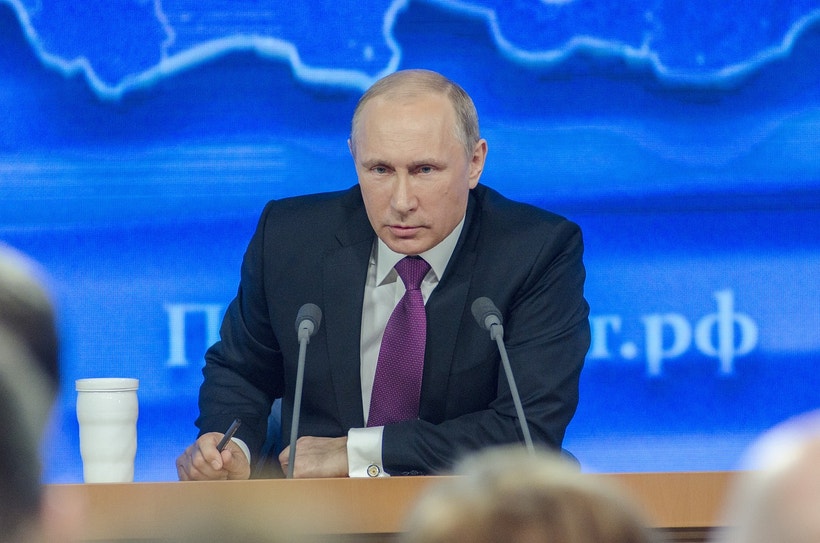BRICS summit recap: what could this mean for the US dollar?
Explore how the recent BRICS summit in Russia, attended by world leaders, could impact the US dollar's dominance and shift global economic power dynamics amidst growing international collaborations.

Key Points
- BRICS nations aim to reduce dependency on Western economies
- Over 30 countries expressed interest in joining BRICS
- Potential shift in global economic power impacting the US dollar
- BRICS expansion could challenge Western economic influence
Two dozen world leaders attended Russia’s largest gathering of world leaders in decades last week from October 22 to 24 – here’s what went down.
What is the BRICS?
BRICS, consisting of Brazil, Russia, India, China, and South Africa, among others, represents five major emerging economies aiming to enhance economic collaboration and reduce dependency on Western economies. The group focuses on economic cooperation, political influence, and development, striving for greater representation in global governance. BRICS collectively accounts for a significant portion of the world's population and GDP, making it a powerful economic bloc. Despite diverse political and economic systems posing challenges, BRICS seeks to provide an alternative platform reflecting the interests of large emerging economies, addressing global issues like climate change, terrorism, and healthcare, while potentially expanding to include other nations.
Putting the R in BRICS: Putin’s attempts for increased global autonomy
Russian President Vladimir Putin declared that over 30 countries have expressed desire to join the BRICS, however there was no direction as to how these additions would work. Additionally, BRICS leaders questioned Putin over the Russia-Ukraine war, however there was no indication from him for an impending end to the conflict. Furthermore, Putin told BRICS leaders the strong possibility of a full-scale war in the Middle East after the sharp rise in tension between Israel and Iran. Analysts see the BRICS summit as the Kremlin making an effort to expand economic and financial ties, as well as a way to show support from the Global South amid its tensions with the West.
Why does this summit matter so much for Russia?
After Russia launched its invasion of Ukraine in February 2022, it has become rather isolated from the rest of the world. Russia also promptly received a slew of sanctions from many other countries including the United States, European Union, Canada, and Japan. Through this summit, Putin was hoping for PR gains with its international partners and against the West. Russia hoped to demonstrate its partners with strong economic countries such as India and China.
What could this mean for the West, specifically the US economy?
As BRICS nations strive to reduce dependency on Western economies, their growing collaboration could lead to shifts in global economic power. If BRICS countries, along with potential new members, pursue alternatives to the US dollar for trade and investment, this could weaken the dollar's dominance in global markets, however this is not as simple as it seems due to the US dollar’s firm place as the world’s reserve currency. That being said, as BRICS expands its economic and financial ties, particularly with the Global South, it could create a counterbalance to Western economic influence, leading to increased competition for the US and its allies in terms of trade and geopolitical alliances. For Russia, enhancing ties through BRICS offers a way to circumvent post-Ukraine Western sanctions by fostering stronger economic relationships with countries like China and India, which could undermine the effectiveness of sanctions and impact Western economies that rely on them as a tool for international diplomacy. The summit indicates potential geopolitical realignments, with BRICS possibly gaining more influence in global governance, challenging existing Western-led institutions and their policies, and affecting global economic rules and trade dynamics. If BRICS successfully enhances intra-group trade and investment, it may draw investment away from Western markets, making emerging economies more attractive destinations for international investors, thus impacting capital flows and economic growth prospects in the West. Overall, the BRICS summit and Russia's efforts to strengthen its ties with these economies underscore a potential shift towards a multipolar economic world, with potential implications for the Western economy and the US dollar's hegemony. However, these changes are incredibly ambitious and would likely take a significant amount of time to implement to a degree that would prominently affect the United States and its related Western economy.
How to Trade US Dollar
- Open an account to get started, or practice on a demo account
- Choose your forex trading platform
- Open, monitor, and close positions on USD pairs
Trading forex requires an account with a forex provider like tastyfx. Many traders also watch major forex pairs like EUR/USD and USD/JPY for potential opportunities based on economic events such as inflation releases or interest rate decisions. Economic events can produce more volatility for forex pairs, which can mean greater potential profits and losses as risks can increase at these times.
You can help develop your forex trading strategies using resources like tastyfx’s YouTube channel. Our curated playlists can help you stay up to date on current markets and understand key terms. Once your strategy is developed, you can follow the above steps to opening an account and getting started trading forex.
Your profit or loss is calculated according to your full position size. Leverage will magnify both your profits and losses. It’s important to manage your risks carefully as losses can exceed your deposit. Ensure you understand the risks and benefits associated with trading leveraged products before you start trading with them. Trade using money you’re comfortable losing. Past performance is not indicative of future results.
